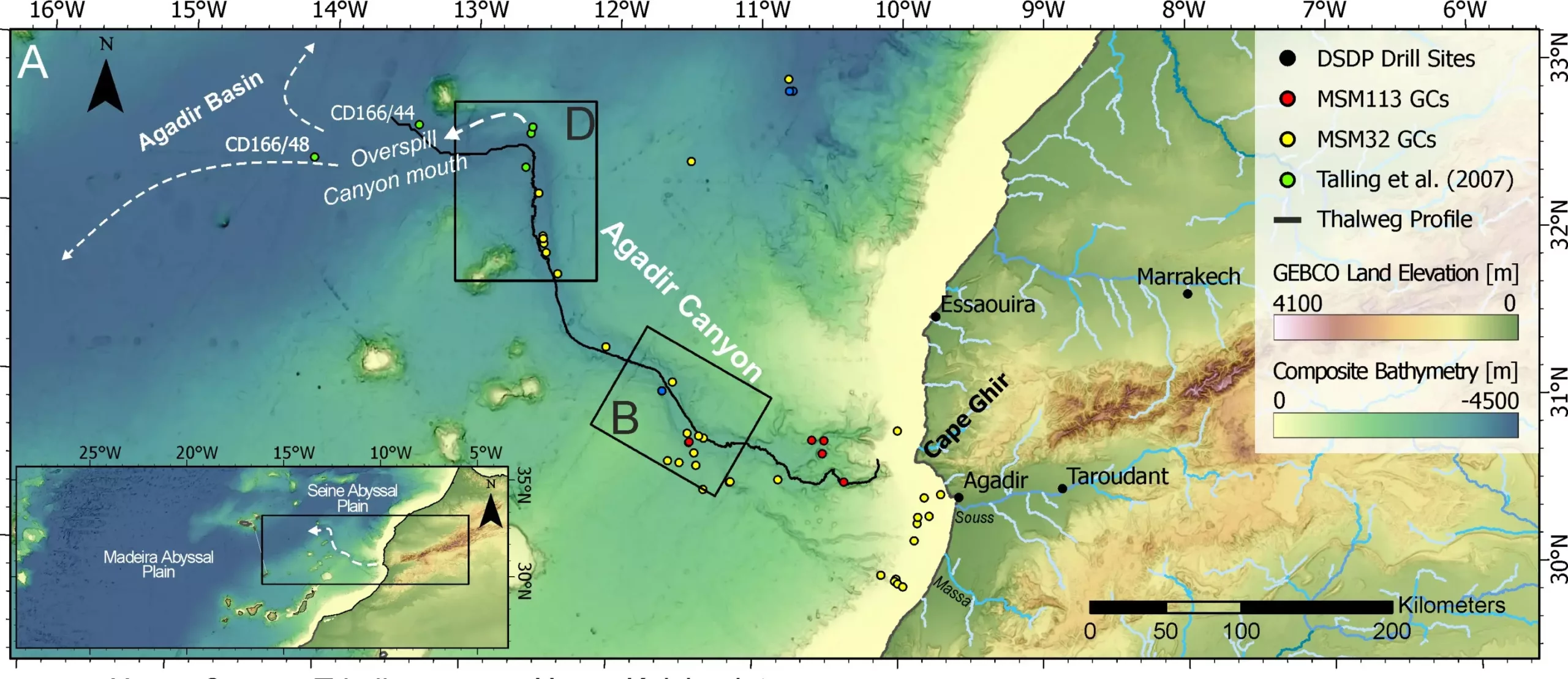The churning depths of the world’s oceans conceal a multitude of geological phenomena, among them the often-overlooked underwater avalanche. Recent research from the University of Liverpool has shed light on one such catastrophic event that occurred nearly 60,000 years ago off the North West coast of Africa, revealing that these actions of nature can be far more complex and destructive than previously believed. This study, titled “Extreme erosion and bulking in a giant submarine gravity low,” has taken significant steps toward detailing the mechanics, implications, and size of these underwater disturbances that traverse vast seafloors.
An underwater avalanche is a monstrous force of nature that can grow exponentially from its initial stage. In this case, a small seafloor landslide, starting with a volume of just about 1.5 kilometers, expanded to more than 100 times its original size, wreaking havoc over thousands of kilometers of ocean floor. The researchers meticulously mapped this phenomenon using over 300 core samples collected over four decades of research voyages, emphasizing the challenge posed by invisibility—unlike terrestrial landslides, underwater avalanches are hidden from plain sight, creating hurdles in data collection and understanding their full impact.
This specific event, originating in the Agadir Canyon, displayed astonishing dynamics as it traveled 2,000 kilometers across the Atlantic. As the avalanche surged forward, it indiscriminately captured boulders, gravel, sand, and mud, showcasing its relentless nature. Dr. Chris Stevenson, a key scientist in the study, articulated the impressive statistics—this underwater avalanche reached heights of 200 meters, moving at speeds comparable to a fast car. It carved a profound trench of 30 meters deep and 15 kilometers wide, suggesting a scene of unimaginable destruction akin to the chaos one might expect from a skyscraper barreling down a highway.
The Implications for Geological Understanding and Infrastructure
Prior to this groundbreaking study, underwater avalanches were primarily thought to arise from significant slope failures. The researchers’ findings have shaken this perception, highlighting that even minor geological events can trigger devastating chains of reactions capable of astonishing growth. With potential growth factors far surpassing those observed in snow or debris avalanches, which typically expand only by a factor of four to eight, these findings signal a new understanding of the risks associated with underwater avalanches.
Professor Sebastian Krastel, a noted marine geophysicist, emphasized the crucial implications these insights carry about geohazards. As global connectivity is increasingly reliant on undersea internet cables, understanding how these underwater avalanches can threaten such infrastructure is paramount. The study effectively links geological processes with the modern dilemmas posed by our dependence on technology.
The ramifications of these underwater avalanches extend beyond just geological concerns; they touch upon issues of national security and the operational integrity of global communications. More broadly, the study has major implications for geohazard risk assessment and disaster preparedness, particularly in our interconnected world where reliance on undersea cables dominates global communications. The research conducted by an international team, including scientists from various prestigious institutions, underlines the importance of collaborative efforts in tackling the complexities of ecological phenomena.
Furthermore, the potential for underwater avalanches to transport pollutants and sediments across vast oceanic distances raises additional environmental concerns. If these massive forces are capable of shifting considerable volumes of debris, understanding their growth patterns becomes essential not only for erosion studies but also for assessing the health of marine ecosystems that may become adversely affected.
The study has opened up new avenues for investigation pertaining to the behaviors of underwater avalanches. According to Dr. Christoph Bottner, significant patterns observed over smaller avalanches warrant a comprehensive examination to establish whether these patterns indicate universal principles governing underwater sedimentary phenomena. Understanding the mechanics of these geological events may lead to predictive models that can bolster preparedness for potential disasters in underwater environments.
The ocean remains a deeply mysterious realm. Continued research, like that conducted by the University of Liverpool, is crucial in demystifying these hidden threats and safeguarding infrastructure, ecosystems, and ultimately, human activities that depend on a stable and resilient marine environment. As nature continues to teach us through its immense power, our quest for knowledge must keep pace with the ever-evolving challenges it presents.


Leave a Reply